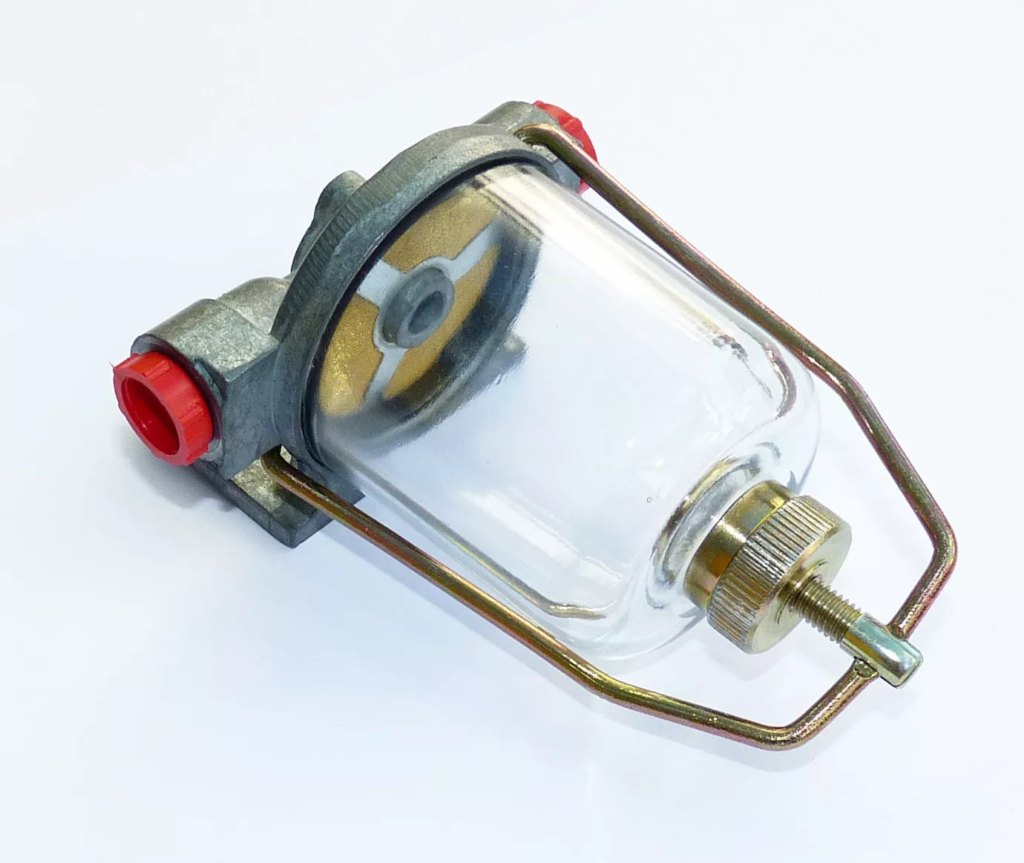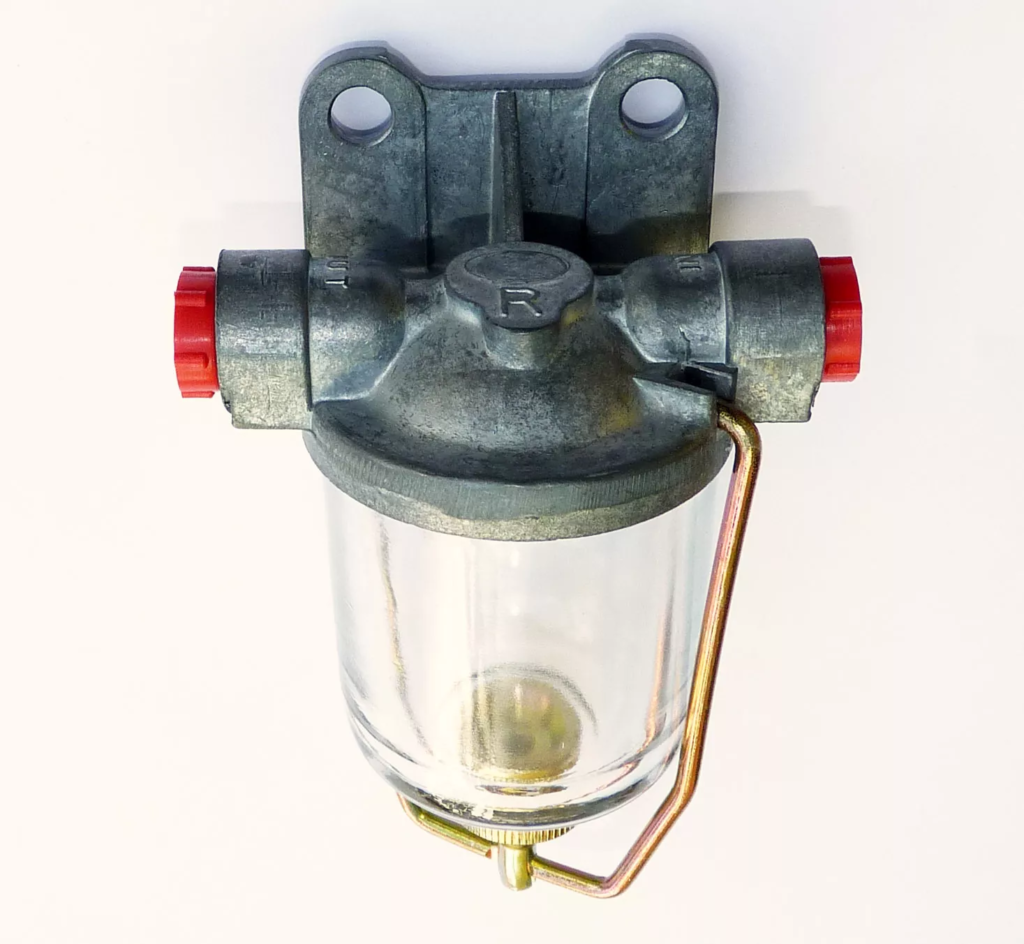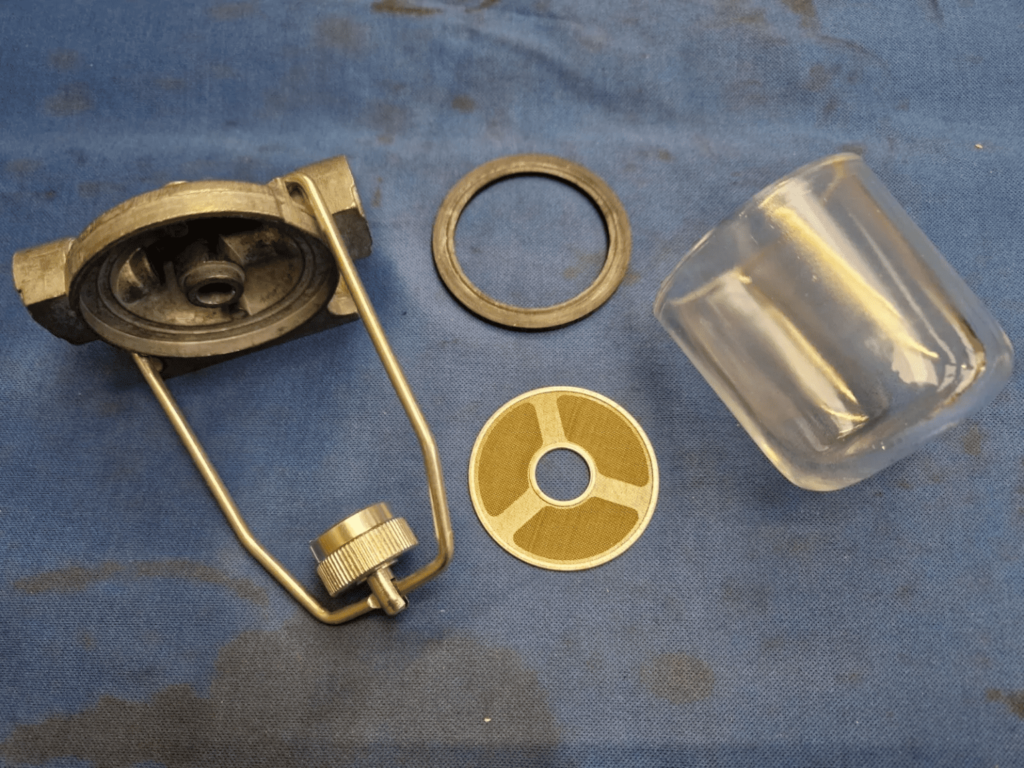The vintage car Fuel & Water Trap Glass Bowl Filter is a fascinating piece of automotive history. Emerging during a time when cars were still gaining prominence, this filter became an essential tool for ensuring engine efficiency. It allowed drivers to manually monitor and maintain fuel quality, preventing impurities from causing engine problems. Let’s dive deeper into its history, usage, and enduring legacy in the world of classic cars.

The Early Development of the Fuel & Water Trap Glass Bowl Filter
As cars became more common in the early 20th century, automotive engineers faced a significant challenge: maintaining a clean, uninterrupted flow of fuel to the engine. Fuel quality was often inconsistent, especially in rural areas or regions without strict regulations. Debris, dirt, and even water could easily contaminate gasoline, leading to clogged fuel systems and poor engine performance. To address this, engineers designed the Fuel & Water Trap Glass Bowl Filter—a simple yet effective solution to filter out impurities.
The filter’s design was both practical and visually intuitive. By incorporating a transparent glass bowl, it allowed drivers to inspect the fuel as it passed through, spotting any impurities like dirt or water. This visual cue gave drivers an early warning that their fuel system needed attention, making it one of the first diagnostic tools used in automotive maintenance.
The Practical Functionality of the Glass Bowl Filter
At its core, the primary purpose of the Fuel & Water Trap Glass Bowl Filter was to keep the fuel flowing clean. Before fuel reached the carburetor or injectors, the filter would trap water and debris. The transparent bowl let drivers and mechanics see exactly what was happening inside. If there was water pooling in the bottom of the bowl or visible particles in the gasoline, it was a clear sign that the fuel needed cleaning.
Once contaminants were detected, the maintenance process was straightforward. A valve at the bottom of the filter allowed users to drain out the impurities, ensuring that only clean fuel continued to flow into the engine. This design was especially useful for older vehicles with carbureted fuel systems, which were more vulnerable to blockages from dirt and debris. These carbureted systems relied heavily on a clean fuel supply to function smoothly, and the glass bowl filter played a critical role in preventing engine damage caused by contaminated fuel.
How Fuel & Water Trap Filters Became an Early Diagnostic Tool
One of the standout features of the glass bowl filter was its dual functionality as both a filtration device and a diagnostic tool. In the era before electronic sensors and computerized diagnostics, this filter provided a hands-on way to monitor engine health. Drivers could visually check their fuel quality without needing complex tools or a mechanic’s expertise.

By simply observing the glass bowl, drivers could assess if water or debris was making its way into the fuel system. If the bowl appeared cloudy or filled with particles, it was a sign that the fuel source—whether from a gas station or storage tank—was compromised. Draining the impurities became a routine part of maintaining a vehicle, keeping the engine clean and running smoothly.
The Filter’s Role in Classic Cars and Vintage Vehicles
While modern vehicles use advanced fuel filters and water separators, the vintage Fuel & Water Trap Glass Bowl Filter continues to hold a special place in the world of classic car enthusiasts. Restorers and collectors of vintage automobiles often seek out original glass bowl filters to maintain the authenticity and historical accuracy of their restorations.
The filter not only serves a functional purpose but also acts as a nostalgic reminder of a time when vehicle maintenance was more hands-on. In an era where drivers took a more active role in maintaining their cars, the glass bowl filter was a tool that empowered owners to keep their engines running smoothly. Today, this type of interaction with a vehicle is rare, as modern cars rely more on computerized systems to alert drivers of issues.
Legacy and Iconic Status of the Glass Bowl Filter
Even though advancements in automotive technology have rendered these vintage filters obsolete in modern cars, their legacy remains strong. The Fuel & Water Trap Glass Bowl Filter has become an iconic symbol of mid-20th-century automotive engineering. It embodies the ingenuity and practicality that characterized early vehicle maintenance.

For classic car enthusiasts, the filter represents a piece of history. Collectors value the simple yet effective design, often using it as a talking point during car shows and restoration projects. These filters are not just functional but are also prized for their craftsmanship. The clear glass bowl, the mechanical simplicity, and the visible interaction with the fuel system all contribute to its iconic status.
Enduring Influence on Modern Fuel Filtration Systems
Though the glass bowl filter is no longer a standard feature in today’s vehicles, its influence is still felt in modern fuel filtration technology. The core concept—keeping impurities out of the fuel system—remains vital. Modern fuel filters and water separators use more sophisticated materials and designs but are built upon the same principles introduced by the vintage glass bowl filter.
By setting the standard for manual inspection and easy maintenance, the glass bowl filter paved the way for today’s more advanced filtration systems. It offered an early glimpse of how proper fuel filtration could improve vehicle performance, increase efficiency, and reduce engine wear—all concepts that continue to drive automotive innovation.
Conclusion: The Timeless Appeal of the Fuel & Water Trap Glass Bowl Filter
The Fuel & Water Trap Glass Bowl Filter may belong to a bygone era of automotive history, but its contributions to engine efficiency and fuel system cleanliness are timeless. From its practical functionality to its role in classic car restoration, this vintage filter continues to captivate car enthusiasts. It’s more than just a tool—it’s a symbol of a hands-on era of driving and maintenance, representing the ingenuity that has driven automotive engineering forward.